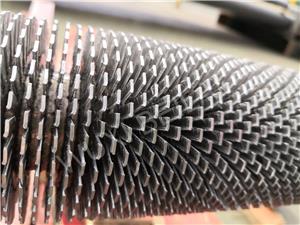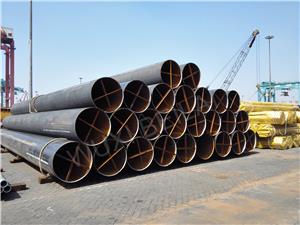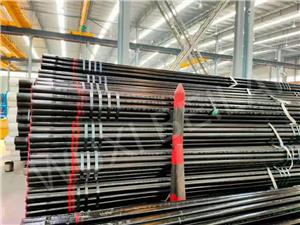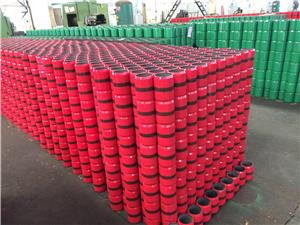Mastering Efficiency: Key Low Temperature Pipe Insulation Requirements by BEILAI Group
Mastering Efficiency: Key Low Temperature Pipe Insulation Requirements by BEILAI Group
As a trusted supplier of low temperature pipe solutions, BEILAI Group is dedicated to optimizing safety, energy efficiency, and operational integrity. One of the most critical aspects of cryogenic and sub-zero piping systems is meeting proper low temperature pipe insulation requirements. In this article, BEILAI explores essential considerations, best practices, and industry standards that ensure reliable performance under extreme cold conditions.
Understanding the Role of Low Temperature Pipe
A low temperature pipe is designed for use in environments where operating temperatures drop significantly below freezing, including cryogenic applications, LNG transportation, and cold climate infrastructure. These pipes must maintain structural integrity while withstanding temperature fluctuations, pressure variations, and potential brittleness caused by extreme cold.
Why Insulation Is Critical
Insulation for low temperature pipe systems serves several essential functions:
Thermal Efficiency: Minimizes heat gain or loss, maintaining process fluid temperatures.
Condensation Control: Prevents moisture accumulation and surface frosting.
Energy Savings: Reduces energy consumption by minimizing thermal transfer.
Safety: Prevents burns and accidents from exposure to extremely cold surfaces.
Corrosion Protection: Insulation barriers reduce risk of corrosion under insulation (CUI).
Core Low Temperature Pipe Insulation Requirements
At BEILAI, our engineering team follows globally recognized low temperature pipe insulation requirements to ensure safe and efficient systems. The following factors are crucial in the insulation design process:
1. Material Selection
Insulating materials must be suitable for sub-zero applications. Recommended materials include:
Polyisocyanurate (PIR)
Phenolic foam
Cellular glass
Flexible elastomeric foams
These materials provide low thermal conductivity and maintain dimensional stability across a wide temperature range.
2. Insulation Thickness
According to low temperature pipe insulation requirements, thickness is determined by:
Pipe size
Operating temperature
Ambient temperature and humidity
Desired energy efficiency and surface temperature control
3. Vapor Barriers and Jacketing
A key requirement for low temperature pipe insulation is incorporating vapor barriers to prevent moisture ingress. Vapor stops and sealed jacketing systems must be installed at joints and penetrations to ensure long-term performance.
4. Mechanical Protection
Insulation systems often require outer jackets made of aluminum, stainless steel, or PVC to protect against mechanical damage, UV exposure, and weathering—especially in outdoor or industrial settings.
5. Fire Resistance
In many industries, compliance with fire codes is part of low temperature pipe insulation requirements. Fire-rated insulation materials are critical for systems located in confined spaces or near flammable substances.
Best Practices for Low Temperature Pipe Insulation
To maximize performance and comply with low temperature pipe insulation requirements, BEILAI recommends the following practices:
Pre-insulate pipes before installation where possible to reduce labor on site.
Use multi-layer insulation systems for extremely cold applications such as LNG.
Apply vapor stops at each insulation section to prevent ice buildup.
Conduct regular maintenance checks for cracks, moisture, and insulation integrity.
Design systems with insulation access points for visual inspection and repairs.
Industry Standards and Compliance
BEILAI Group ensures all low temperature pipe insulation projects adhere to international standards such as:
ASTM C585 - Standard Practice for Inner and Outer Diameters of Thermal Insulation
ISO 12241 - Thermal insulation for building equipment and industrial installations
BS 5970 - Code of practice for thermal insulation of pipework
Applications of Low Temperature Pipe
Our insulated low temperature pipe products are used in a range of industries:
Liquefied Natural Gas (LNG) pipelines
Petrochemical facilities
Food processing plants
Pharmaceutical cold storage
District cooling systems
Why Choose BEILAI Group?
BEILAI Group provides a full range of low temperature pipe solutions, from pipe supply to customized insulation systems. Our advantages include:
State-of-the-art production lines and inspection facilities
Global certifications (ISO, PED, API)
Custom pipe sizes, materials, and insulation options
Technical consulting and engineering support
Rapid global delivery capabilities
Conclusion
In conclusion, understanding and meeting low temperature pipe insulation requirements is essential for safety, performance, and longevity. At BEILAI Group, we combine world-class manufacturing with expert knowledge to provide reliable, insulated low temperature pipe solutions for the most demanding environments. Contact us today for customized assistance and project quotations.
BEILAI Group — Engineering Excellence in Every Pipe.




